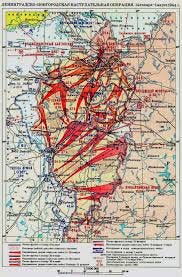On January 14, 1944, the Soviet Union launched a significant military operation that demonstrated innovative strategy and tactics during World War II. This event, known as the Leningrad–Novgorod Offensive, was the first of Stalin's ten strategic offensives and marked a crucial turning point on the Eastern Front.
The operation showcased several innovative aspects:
Coordinated Multi-Front Assault: The Soviets simultaneously began the Leningrad–Novgorod Offensive and the Krasnoye Selo–Ropsha Offensive, demonstrating their ability to coordinate large-scale operations across multiple fronts
Breaking the Siege: This offensive was aimed at finally breaking the prolonged Siege of Leningrad, which had lasted for nearly 900 days. The strategic goal was to push German forces away from the city and secure a decisive victory
Combined Arms Warfare: The operation likely involved a combination of infantry, armor, and artillery, typical of Soviet offensive operations during this period of the war.
Winter Warfare: Launching the offensive in January showcased the Soviet ability to operate effectively in harsh winter conditions, often catching German forces off guard.
Strategic Timing: The offensive coincided with other Allied operations, such as the ongoing Battle of Monte Cassino in Italy, which began on January 17, demonstrating a broader strategic coordination among the Allies. The success of this operation contributed significantly to the eventual Soviet victory on the Eastern Front and demonstrated the Red Army's growing tactical and strategic capabilities as the war progressed.





